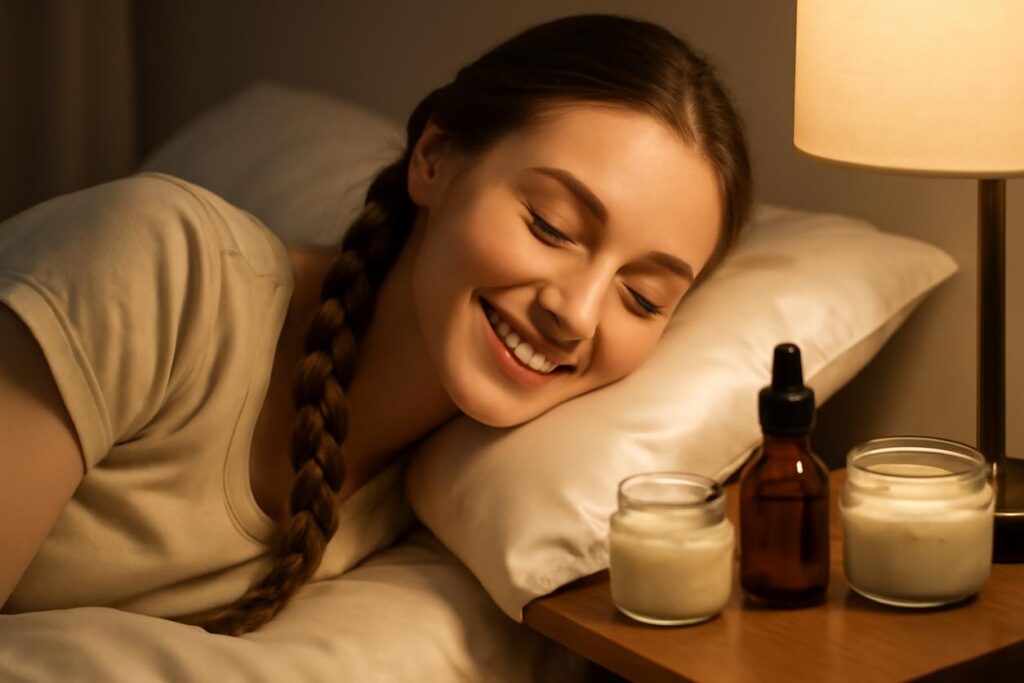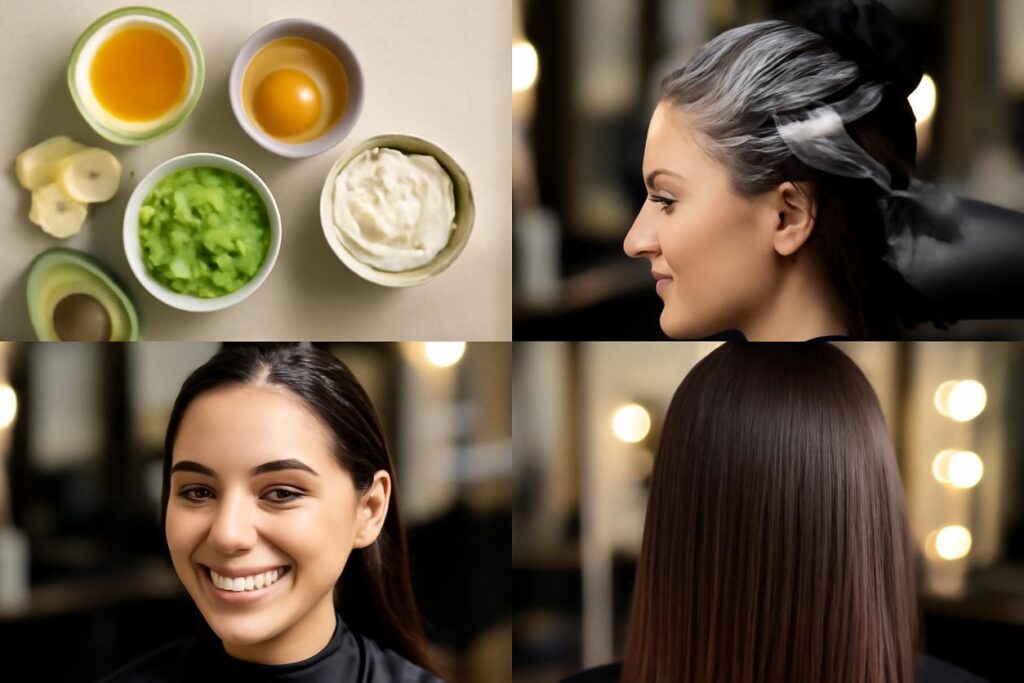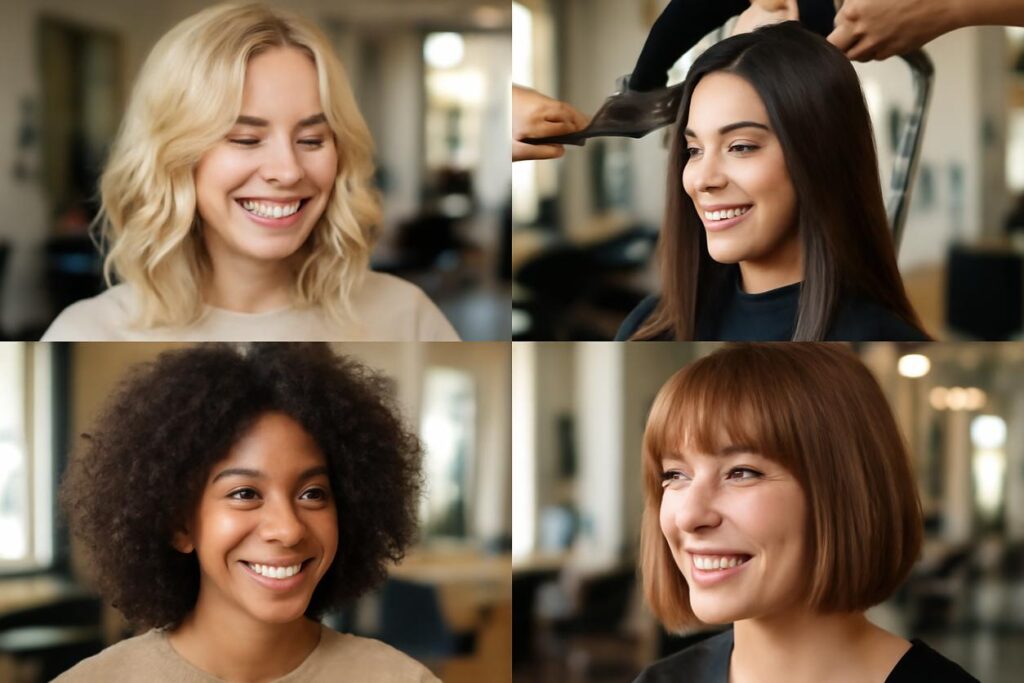Table of Contents
- Why Your Nighttime Routine is a Game-Changer for Hair Repair
- Your 3-Minute Evening Hair Assessment Checklist
- Overnight Hair Care Treatments for Every Hair Type
- DIY Sleep-In Masks: Simple Recipes for Healthy Hair
- Choosing Sleep-Friendly Accessories: Pillowcases, Caps, and Wraps
- How to Braid and Tie Hair for Less Breakage
- Morning Restoration: Your Gentle Unwrap and Styling Routine
- Common Mistakes That Undo Your Overnight Hair Care Efforts
- Sample 7-Night Plan to Reset Your Hair Health in 2025
- Product Glossary and Ingredient Notes
- References and Further Reading
Why Your Nighttime Routine is a Game-Changer for Hair Repair
You already know that a good night’s sleep is essential for your mind and body, but did you know it’s also the golden hour for your hair? While you rest, your body is in peak repair mode. This is when cell regeneration accelerates, and that includes the cells responsible for hair growth and strength. A dedicated overnight hair care routine leverages this natural process, transforming 8 hours of sleep into a powerful, passive treatment session.
During the day, your hair battles UV rays, pollution, and styling stress. At night, it gets a much-needed break. By creating the right environment, you can minimize damage and maximize restoration. The two main goals of any effective overnight hair care strategy are to reduce physical damage and deeply nourish the strands. This involves minimizing friction from tossing and turning, which can lead to breakage and frizz, and using treatments that have an extended, uninterrupted period to penetrate the hair shaft. Think of it as a facial for your hair—it works best when left to absorb peacefully, without interference.
Your 3-Minute Evening Hair Assessment Checklist
Before you jump into any treatment, take a few moments to understand what your hair needs. A quick assessment helps you tailor your overnight hair care for maximum impact. Run your hands through your hair and ask yourself these questions:
- How do the ends feel? Are they dry, brittle, or split? This signals a need for moisture and sealing.
- Is my scalp oily or dry? An oily scalp might benefit from a light application of dry shampoo before bed, while a dry, itchy scalp could use a soothing, lightweight serum.
- Does my hair look dull or vibrant? Dullness often points to a lack of moisture or a need to clarify product buildup.
* How tangled is my hair? Significant tangles mean you need to gently detangle before sleeping to prevent knots from worsening and causing breakage.
This simple check-in guides your routine, ensuring you give your hair exactly what it’s craving, rather than applying products blindly.
Overnight Hair Care Treatments for Every Hair Type
Not all hair is created equal, and your nighttime routine should reflect that. Here’s how to customize your approach based on your hair’s unique texture and needs.
Fine and Straight Hair: Lightweight Overnight Care
The biggest challenge for fine, straight hair is finding treatments that nourish without weighing it down or causing greasiness. The focus here is on protecting delicate strands and boosting volume.
- Focus on the Ends: Apply a lightweight serum or a single drop of a non-greasy oil like argan or grapeseed oil only to the bottom two or three inches of your hair.
- Protect Your Roots: If your roots tend to get oily, a light spritz of dry shampoo before bed can absorb excess sebum while you sleep, leaving you with fresher hair in the morning.
- Silk is Your Best Friend: A silk or satin pillowcase is non-negotiable. It allows your fine strands to glide without snagging or tangling.
Curly and Coily Hair: Moisture-First Sleeping Methods
Curly and coily hair textures are naturally prone to dryness, so moisture retention is the top priority in your overnight hair care routine. The goal is to wake up with defined, hydrated, and frizz-free curls.
- Leave-In Conditioner is Key: Lightly mist your hair with water and apply a creamy leave-in conditioner, focusing on the mid-lengths and ends.
- Seal the Deal: Lock in that moisture with a light oil, a technique often called the LOC (Leave-in, Oil, Cream) or LCO (Leave-in, Cream, Oil) method.
- Adopt Protective Styles: The “pineapple” method—gathering your hair into a very high, loose ponytail on top of your head—protects your curl pattern. For tighter coils, twists or loose braids are excellent options.
- Cover Up: A satin-lined bonnet or cap is essential to prevent your cotton pillowcase from absorbing all the moisture you just applied.
Thick and Coarse Hair: Sealing and Detangling Tips
Thick hair can handle richer products and often requires more intensive detangling and moisture-sealing to stay manageable and healthy.
- Detangle Thoroughly but Gently: Before applying any product, use a wide-tooth comb or your fingers to work through any knots, starting from the ends and moving up to the roots.
- Use Richer Products: This hair type can benefit from heavier butters like shea or mango butter, or oils like castor and avocado oil, to deeply penetrate and soften the strands overnight.
- Braid for Control: A loose braid or a few large twists can prevent your hair from tangling into a large mass overnight and will also create a gentle wave pattern by morning.
DIY Sleep-In Masks: Simple Recipes for Healthy Hair
You don’t need expensive products to achieve great results. Your kitchen can be a treasure trove of ingredients for effective overnight hair care. Always apply these masks to damp or dry hair and cover with a shower cap or bonnet to protect your bedding.
Hydrating Aloe Vera and Coconut Water Mask (All Hair Types)
This lightweight mask is a hydration hero, perfect for thirsty hair without being greasy.
- Ingredients: 2 tablespoons of pure aloe vera gel and 3 tablespoons of coconut water.
- Instructions: Mix the ingredients in a small spray bottle. Lightly spritz your hair from roots to ends, focusing on dry areas. It’s light enough to not need a full wash in the morning; a simple rinse will do.
Strengthening Rosemary and Jojoba Oil Treatment (Fine/Thick Hair)
Rosemary is celebrated for its scalp-stimulating properties, while jojoba oil mimics the scalp’s natural sebum, making it an excellent moisturizer.
- Ingredients: 3 tablespoons of jojoba oil and 3-4 drops of rosemary essential oil.
- Instructions: Mix the oils together. Apply sparingly to your scalp with your fingertips, using gentle circular motions. Work any excess through the ends of your hair. This is a more intensive treatment, so you’ll likely want to shampoo in the morning.
Choosing Sleep-Friendly Accessories: Pillowcases, Caps, and Wraps
What your hair rests on is just as important as what you put in it. The right accessories are a cornerstone of any successful overnight hair care plan.
The Power of Silk and Satin
Traditional cotton pillowcases have a rough texture that can snag hair cuticles, leading to frizz and breakage. They are also highly absorbent, wicking moisture and products away from your hair and skin.
- Less Friction: Silk and satin have a smooth surface, allowing hair to glide across it. This means fewer tangles and less frizz when you wake up.
- Moisture Retention: These materials are far less absorbent than cotton, helping your hair retain its natural oils and the products you’ve applied.
Bonnets, Caps, and Scarves
For those with curly, coily, or very long hair, a physical barrier provides an extra layer of protection.
- Bonnets and Caps: Ideal for containing voluminous hair and preserving complex styles like twists or braids. Look for ones lined with satin.
- Scarves: A silk or satin scarf can be used to “wrap” the hair, keeping it smooth and protected. This is also a great way to preserve a straight style.
How to Braid and Tie Hair for Less Breakage
Leaving your hair down while you sleep can lead to a tangled mess. A simple protective style is a non-negotiable part of good overnight hair care. The golden rule is to keep it loose—a style that pulls on your scalp will cause more harm than good.
- Loose Braid: A classic for a reason. A single, loose braid down your back or over your shoulder keeps hair contained and minimizes friction. Secure the end with a gentle tie like a silk scrunchie.
- The Pineapple: As mentioned for curly hair, this involves creating a very loose, high ponytail on top of your head. It protects the bulk of your curls from being crushed while you sleep.
- Low, Loose Bun: Gather your hair into a loose bun at the nape of your neck or on top of your head. Use a scrunchie or spin pins instead of a tight elastic to avoid creating a crease or causing breakage.
Morning Restoration: Your Gentle Unwrap and Styling Routine
How you treat your hair in the first few minutes after waking up can make or break your overnight efforts.
- Gentle Takedown: Carefully undo your braid, bun, or pineapple. Don’t rip the hair tie out.
- Finger-Comb First: Use your fingers to gently separate strands and detangle any minor knots. This is much gentler than going straight in with a brush.
- Refresh and Revive: A light mist of water, rosewater, or a curl-refreshing spray can bring life back to your hair without needing a full wash.
- Style Minimally: Your hair should be much more manageable. Add a touch of oil to the ends for shine or a bit of styling cream to tame flyaways, and you’re ready to go.
Common Mistakes That Undo Your Overnight Hair Care Efforts
Even with the best intentions, a few common missteps can sabotage your routine. Avoid these pitfalls:
- Sleeping with Wet Hair: Hair is at its most fragile when wet. Tossing and turning on wet hair can stretch the strands to their breaking point. Always ensure your hair is at least 80% dry before bed.
- Using Tight Hair Ties: Tight elastic bands create tension and can cause severe breakage at the point of contact. Always opt for soft, seamless ties like scrunchies.
- Applying Too Much Product: More is not always better. Overloading your hair with heavy oils or creams can clog scalp pores and leave your hair feeling greasy and weighed down.
- Forgetting Your Scalp: A healthy scalp is the foundation of healthy hair. A gentle scalp massage before bed can stimulate blood flow, which is beneficial for hair growth.
Sample 7-Night Plan to Reset Your Hair Health in 2025
Ready to get started? Here is a sample weekly plan you can adapt to your hair type. This routine focuses on building a consistent habit of effective overnight hair care.
| Day | Evening Action | Goal |
|---|---|---|
| Night 1 | Clarify and Deep Condition (wash day). Sleep in a loose braid on a silk pillowcase. | Start with a clean slate. |
| Night 2 | Assess ends. Apply 1-2 drops of lightweight oil to the bottom 2 inches. | Targeted hydration. |
| Night 3 | Gentle scalp massage with fingertips for 3-5 minutes. Sleep in a pineapple/loose bun. | Stimulate scalp health. |
| Night 4 | Apply a light leave-in conditioner spray or DIY aloe mist. | Boost mid-week moisture. |
| Night 5 | Focus on protection. Ensure hair is loosely secured in a braid or twists. | Prevent physical damage. |
| Night 6 | Apply a DIY overnight mask or your favorite pre-shampoo treatment. | Deep nourishment. |
| Night 7 | Rest night. Simply secure your hair loosely and let it be. | Allow hair and scalp to breathe. |
Product Glossary and Ingredient Notes
Understanding what’s in your products helps you make better choices for your hair. Here are a few key terms to know:
- Humectants (e.g., Glycerin, Hyaluronic Acid): These ingredients act like magnets for moisture, drawing water from the air into your hair strands. They are excellent for combating dryness.
- Emollients (e.g., Shea Butter, Argan Oil): These work by filling in the gaps in the hair cuticle, making your hair feel smoother and softer. They improve texture and manageability.
- Occlusives (e.g., Lanolin, Mineral Oil): These ingredients form a physical barrier on the hair shaft, sealing in moisture and preventing it from escaping. They are great for very dry or high-porosity hair.
- Proteins (e.g., Keratin, Silk Amino Acids): These ingredients temporarily patch weak spots in the hair’s structure, adding strength and reducing breakage. Use protein treatments in moderation to avoid “protein overload,” which can make hair brittle.
References and Further Reading
Your journey to healthier hair is ongoing. For those who want to dive deeper into the science and art of hair care, these resources provide valuable information:
- Expert Insights: For professional tips and trichologist-backed advice, explore platforms like Rich Hair UK.
- The Role of Diet: Remember that hair health starts from within. Research on hair nutrition shows the strong link between vitamins, minerals, and hair vitality.
- The Sleep Connection: To understand more about how rest impacts every aspect of your health, including your hair, the Sleep Foundation is a comprehensive resource.






